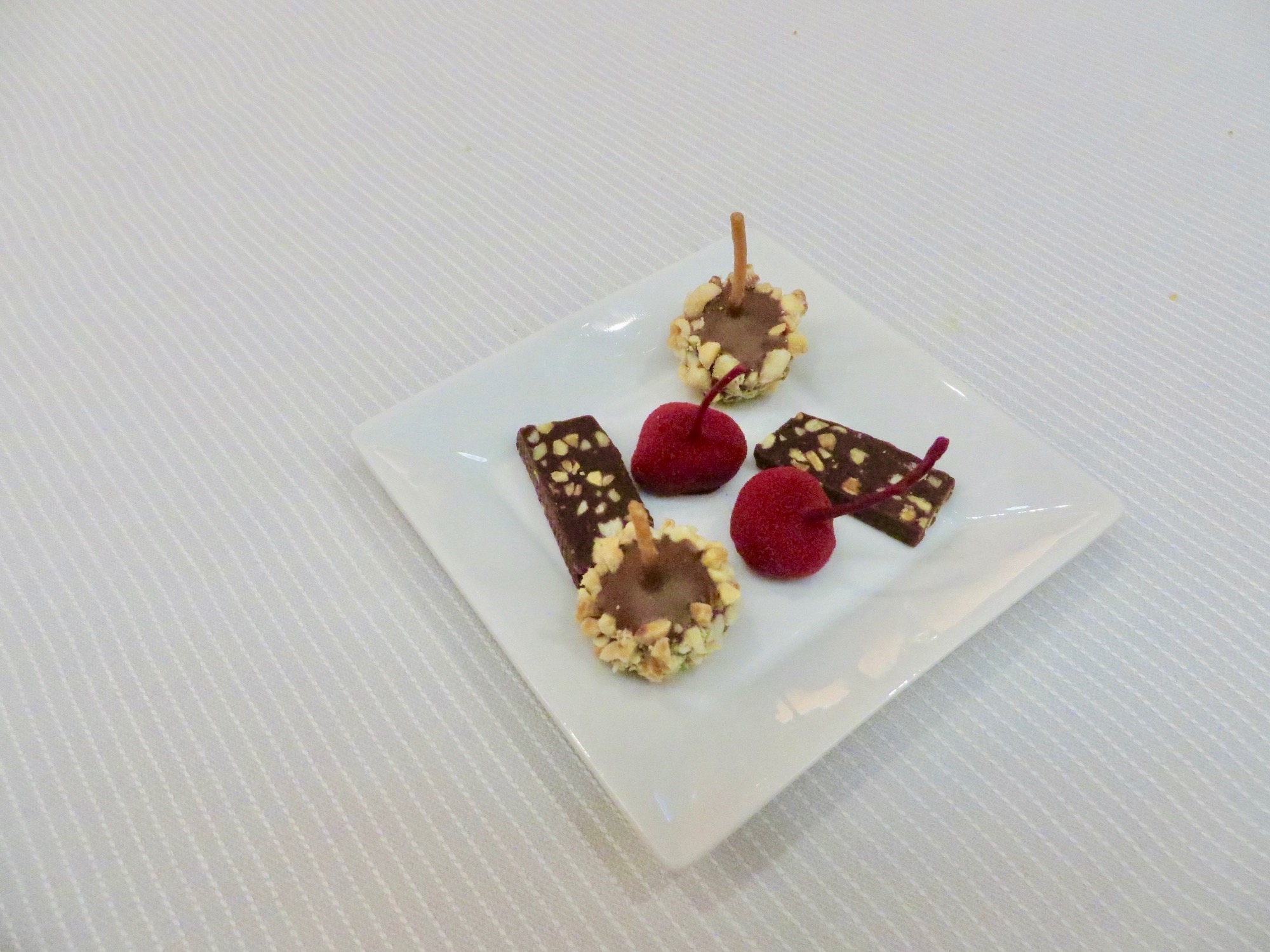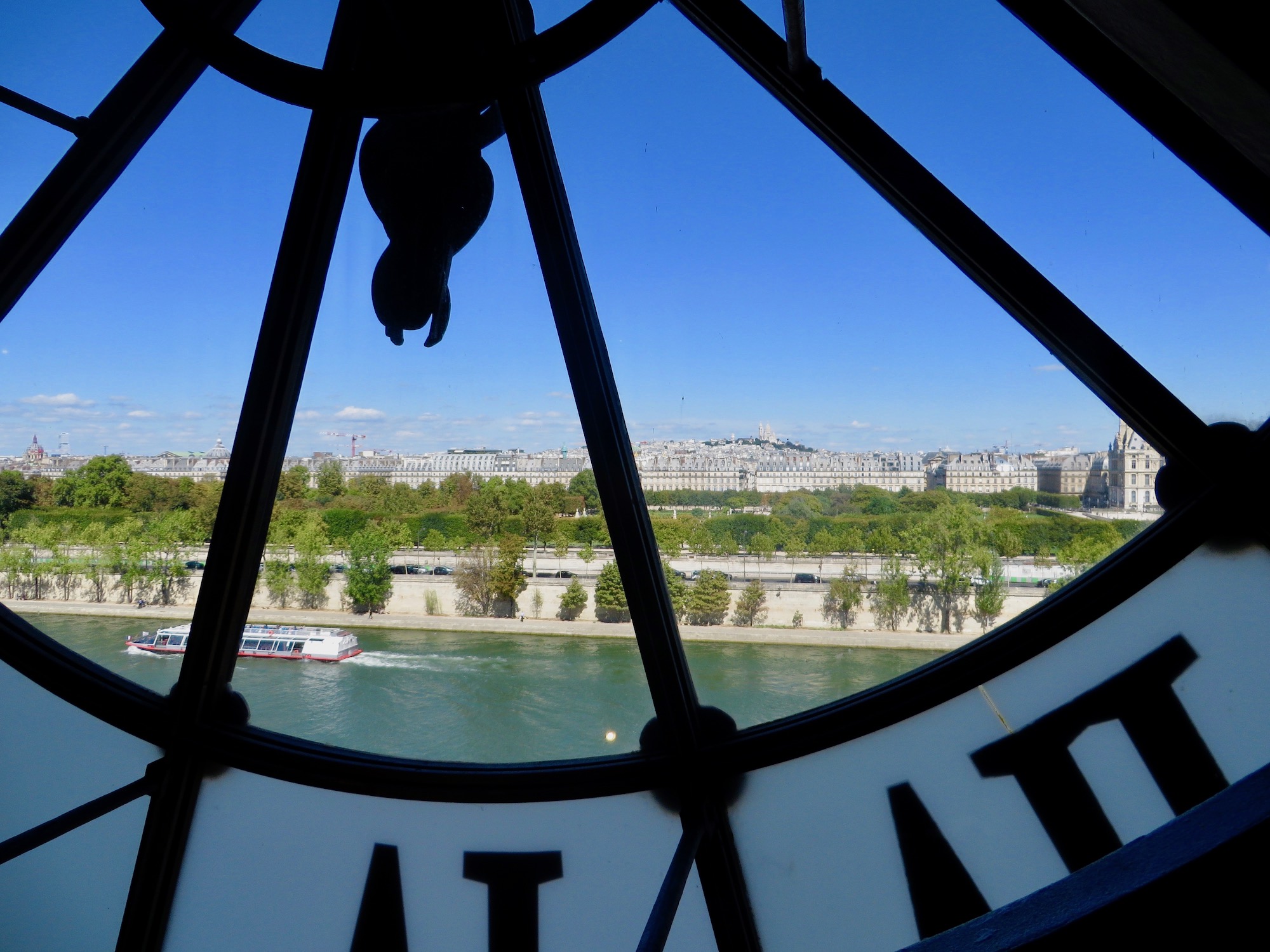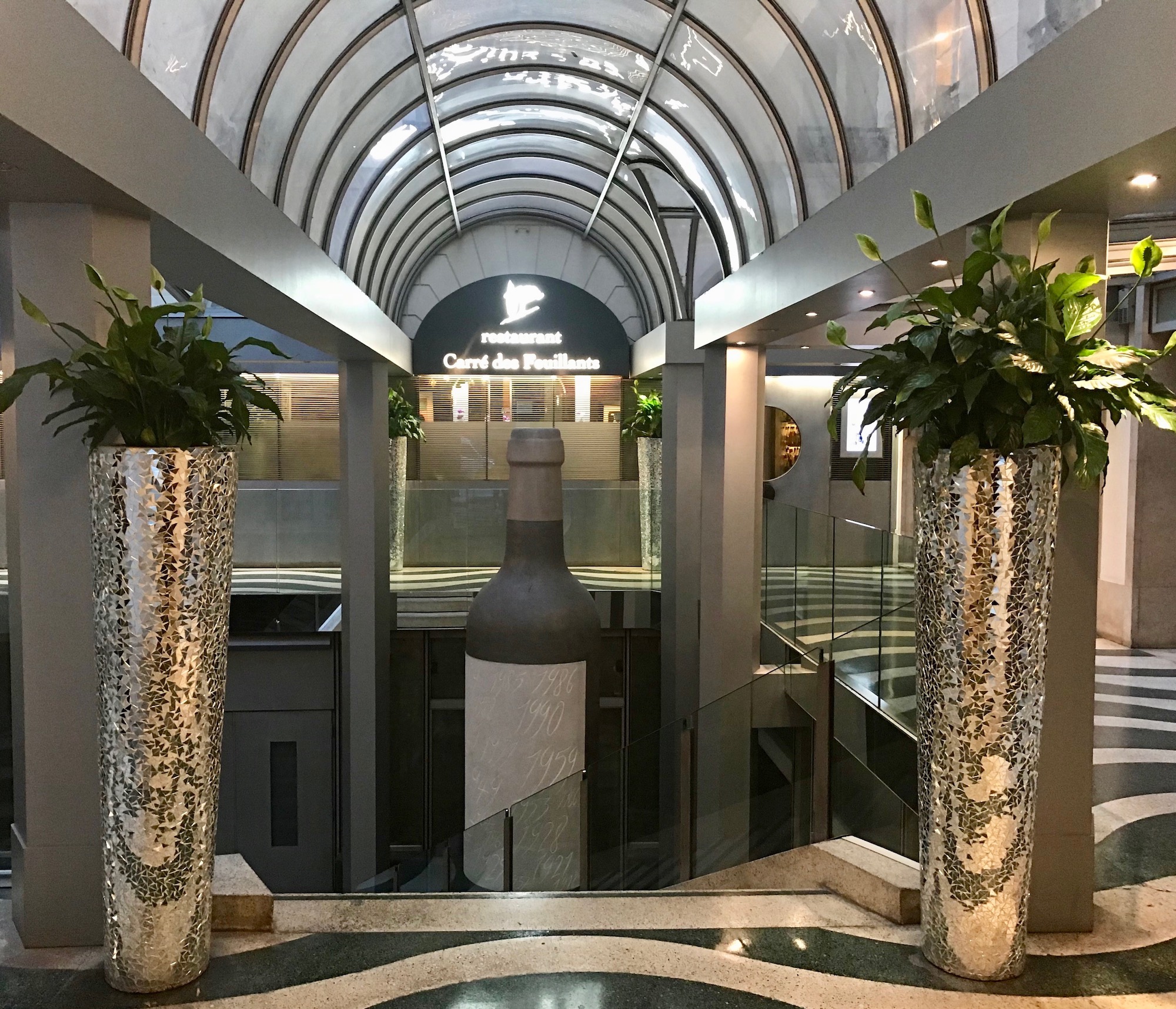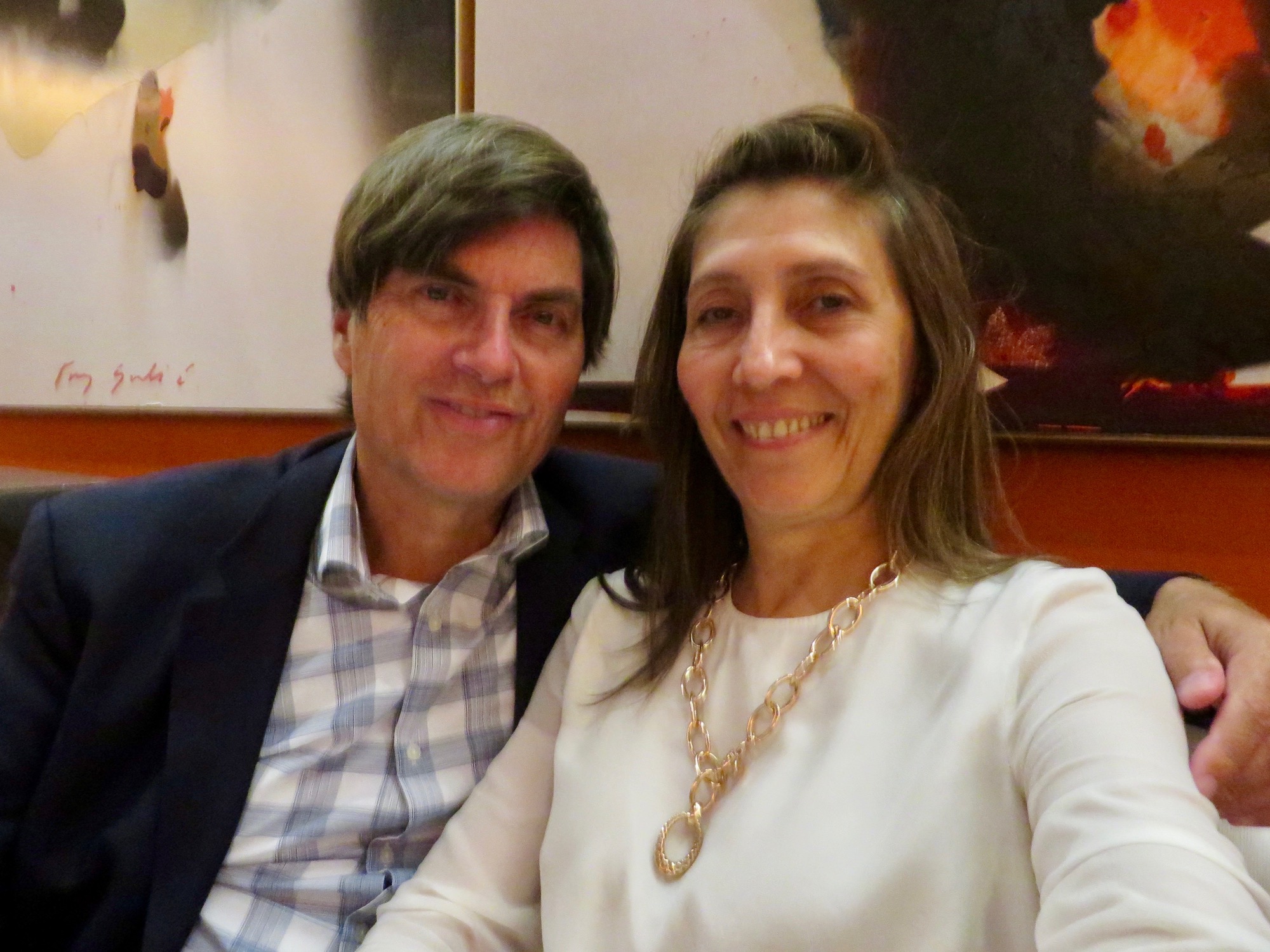Great Art and Gastronomy, A Tale of Two Parisian Arrondissements
The grand former railway station loomed before us, framed against a bright blue Parisian autumn sky. We were here in the genteel 7th arrondissement, on the left bank of the Seine, to pay homage to the world’s best collection of Impressionist art, the Musee d’Orsay.
Paris is divided into 20 arrondissements, each of which is divided into 4 quartiers. The 7th arrondissement is situated just across the river from the Tuileries gardens and the Louvre. The Musee D’Orsay is housed in the former Gare d’Orsay, a Beaux-Arts railway station built between 1898 and 1900 for the 1900 Universal Exposition in Paris, and opened in its second life as a museum in 1986. The classical stone exterior yields to a metal and glass-filled interior, an example of the frame competing with the art itself. The old refurbished train station is a remarkably beautiful setting for the treasures within.
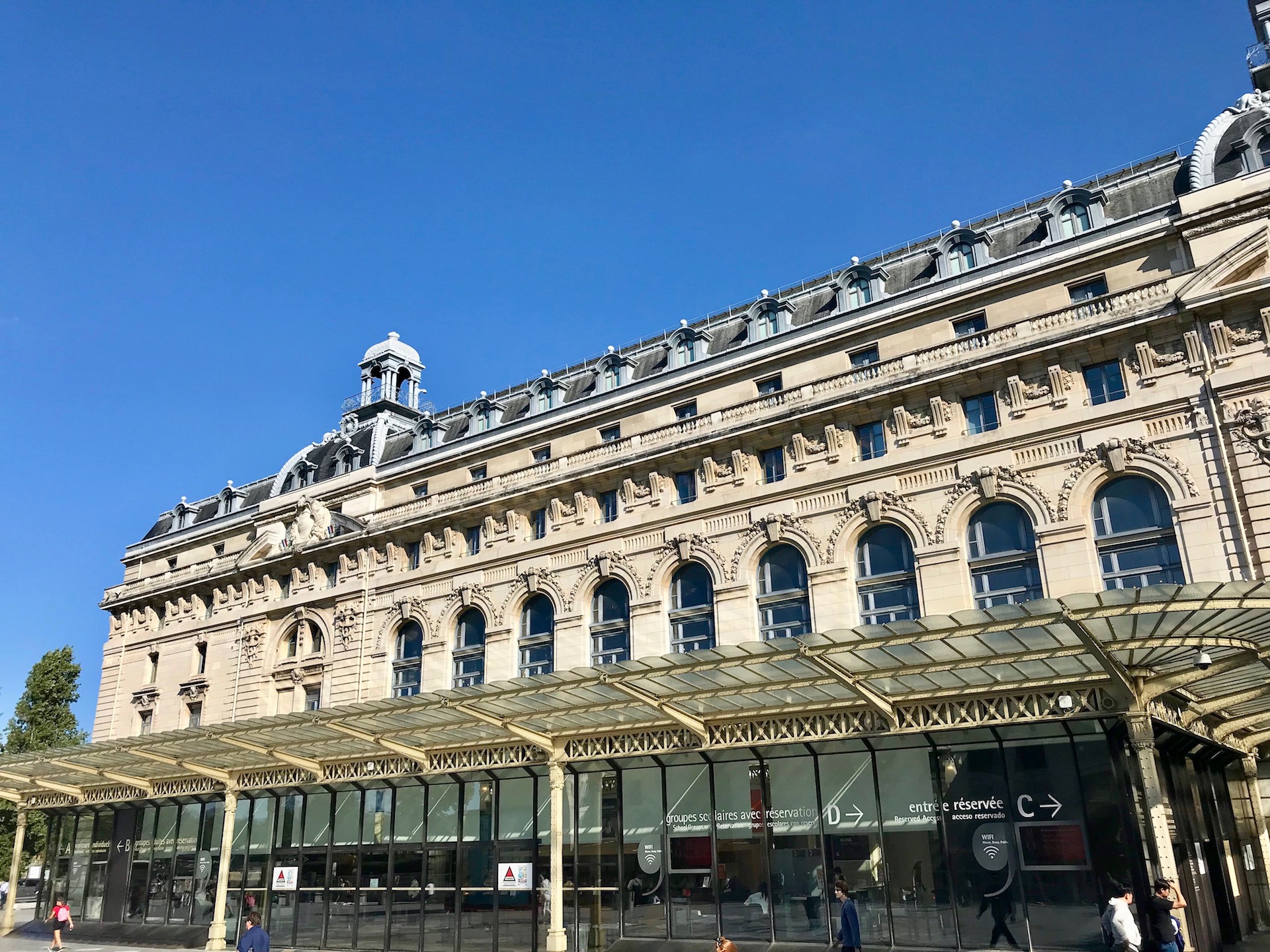
I have loved the Impressionists for many years, since I began visiting museums with my first trip to Europe just after high school. On a more recent trip to Paris in 1999, a week-long state strike had shuttered all of the state-run museums, so my desire to see this amazing collection was thwarted. Now it was time.
Though the collection may be most famous for its staggering collection of Impressionist painter masterworks, the museum goes well beyond those, as it displays French Art from 1848-1914, showcasing other genres such as Art Nouveau. But pride of place must go to the stunning collection of Impressionist paintings on the 5th floor. The collection was meant to be a bridge between the time periods of artistic works where the Louvre leaves off and where the modern art of the Centre Pompidou begins.
Don’t miss the two great overlooks within the museum, the first from the upper floors looking over the grand hall of the station, and the second through the hands of the immense clock face, looking over the Seine towards Montmartre and the Basilica of Sacre Coeur.
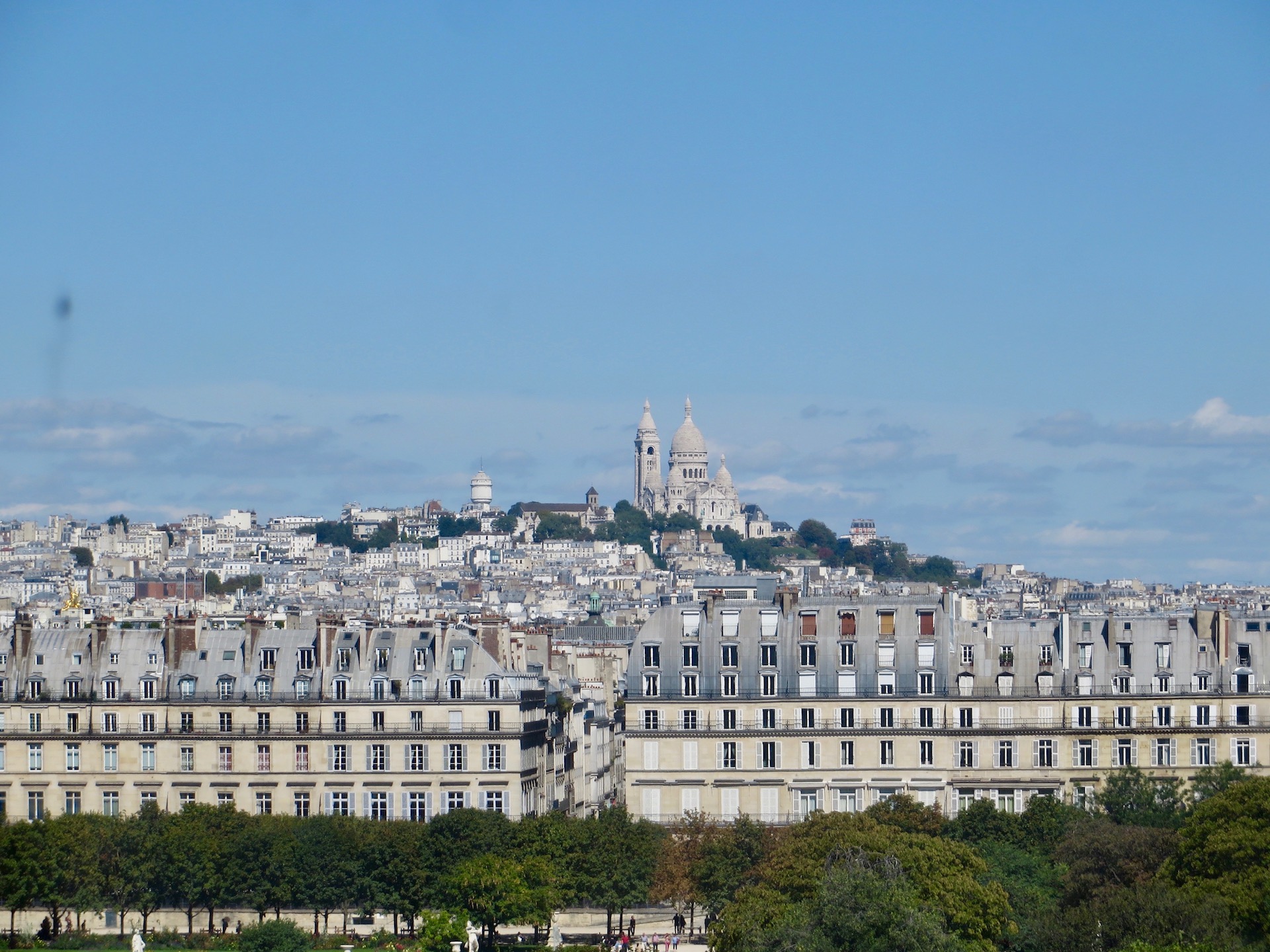
For true aficionados of Impressionist art, the museum affords delighted recognition of famous masterpieces throughout. Impressionists painted outdoors, their brushstrokes capturing impressions of a scene, leading critics to label the art with a then-derogatory term of impressionism at first, as the work was viewed as rebelling against the traditional salon. So many masters to take in, with scores of paintings by Monet, Renoir, Manet, Degas, Pissarro, Cezanne, Toulouse-Lautrec, Gauguin and Van Gogh (the latter two on the 2nd floor), an abundance of both quality and quantity. Some of the paintings that provided that shock of immediate recognition included:
• Manet’s Luncheon on the Grass
• Renoir’s Bal du Moulin de la Gallette
• Van Gogh’s Starry Night over the Rhone and Self portrait
• Monet’s Water Lily Pond from his garden at Giverny, plus some of his Haystack or Rouen Cathedral studies
It is possible to have sensory overload with the sheer volume of paintings and artwork on display. We stayed 2 1/2 hours and simply had to vow to return to be able to fully appreciate the scope of work on offer.
Departing the Impressionist Galleries, we took a needed break over lunch at one of the museum restaurants, Café Campana. Designed by the Campana brothers, famous Brazilian designers, the café transports the visitor into a dream-like aquatic environment, a tribute to Art Nouveau. Colors of the décor echo the blue of the sea and the orange of coral.
The cuisine was tasty and satisfying. We sampled a country terrine with celery remoulade, and a chicken fricassee with cream, accompanied by rice with poppy seeds. Steps lead to doors opening onto the terrace for expansive views overlooking the Seine and the Louvre.
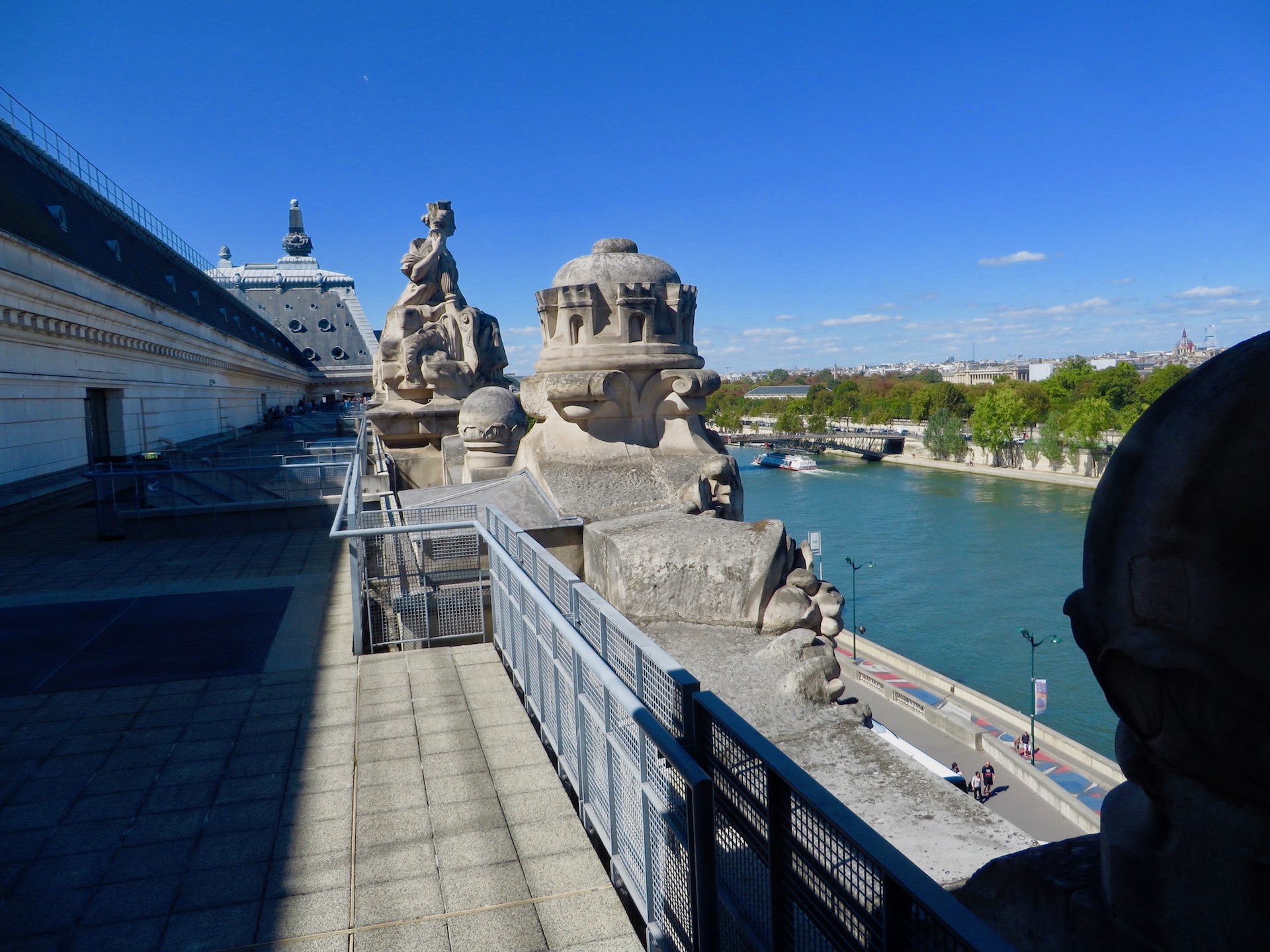
Our evening’s dinner plans led us on an easy 11-minute walk from the museum, across the Seine and into another of Paris’s charming districts. We traversed the river on a pedestrian footbridge, the Passarelle Leopold-Sedar Senghor, which deposited us directly into the Tuileries Gardens in the posh, lively and historic 1st arrondissement. The 1st has its own share of famous Parisian locales, including the Louvre, Palais Royal, Rue St. Honore, Place Vendome, Pont Neuf, and la Sainte Chapelle, as it includes the western end of the Ile de la Cite. We are now on the right bank of the Seine, in one of the least populated, smallest arrondissements of the city.
Nearing our dining destination, we pass through the Place Vendome, an eight-sided square with its centerpiece the Vendome column, erected by Napoleon to commemorate the Battle of Austerlitz, and modeled after Trajan’s column in Rome. It’s posh setting is home to the Ritz Hotel along with fashionable boutiques and elegant jewelers. The high-end shopping reaches its apex along Rue St. Honore, home to some of the world’s most exclusive boutiques, five-star lodging and top restaurants.
Located under the arcades of the Rue de Castiglione, Carré Des Feuillants is a sophisticated and elegant restaurant built on the site of the former Feuillants convent built during the reign of King Henry II (1519-1559). It is owned by the famous chef Alain Dutournier and this haute cuisine restaurant has been awarded two Michelin stars.
The restaurant is elegant and warm. The four dining rooms have been decorated in tones of off-white, black and beige with bare wood floors, Murano chandeliers and modern art. Impeccable, unobtrusive service complements the outstanding culinary experience.
Exceptional Cuisine at Carré des Feuillants
Located under the arcades of the Rue de Castiglione, Carré Des Feuillants is a sophisticated and elegant restaurant built on the site of the former Feuillants convent built during the reign of King Henry II (1519-1559). It is owned by the famous chef Alain Dutournier and this haute cuisine restaurant has been awarded two Michelin stars.
The restaurant is elegant and warm. The four dining rooms have been decorated in tones of off-white, black and beige with bare wood floors, Murano chandeliers and modern art. Impeccable, unobtrusive service complements the outstanding culinary experience.
Chef Alain Dutournier originated from the Pyrenees region of southwest France and takes full advantage of fresh products available from the ocean and the forest.
We chose the 8-course Discovery menus, and the garcon approached my wife with an earnest expression and asked, “Madame, et pour le vin?”. The serious tone captured how essential the staff considers the savoring of a fine wine or wines to the meal experience.
As a cooking school graduate, my wife Letizia helps me better appreciate the fine points of the cuisine and overall experience. In her view, it was cuisine of character, refined, pure, with authenticity plus surprises, and featuring fresh local, seasonal produce.
We began with a fine glass of champagne, along with a selection of breads and breadsticks and a carousel of amuse bouches, a colorful fantasy of small bites. The main selections provided one delicious taste explosion after another:
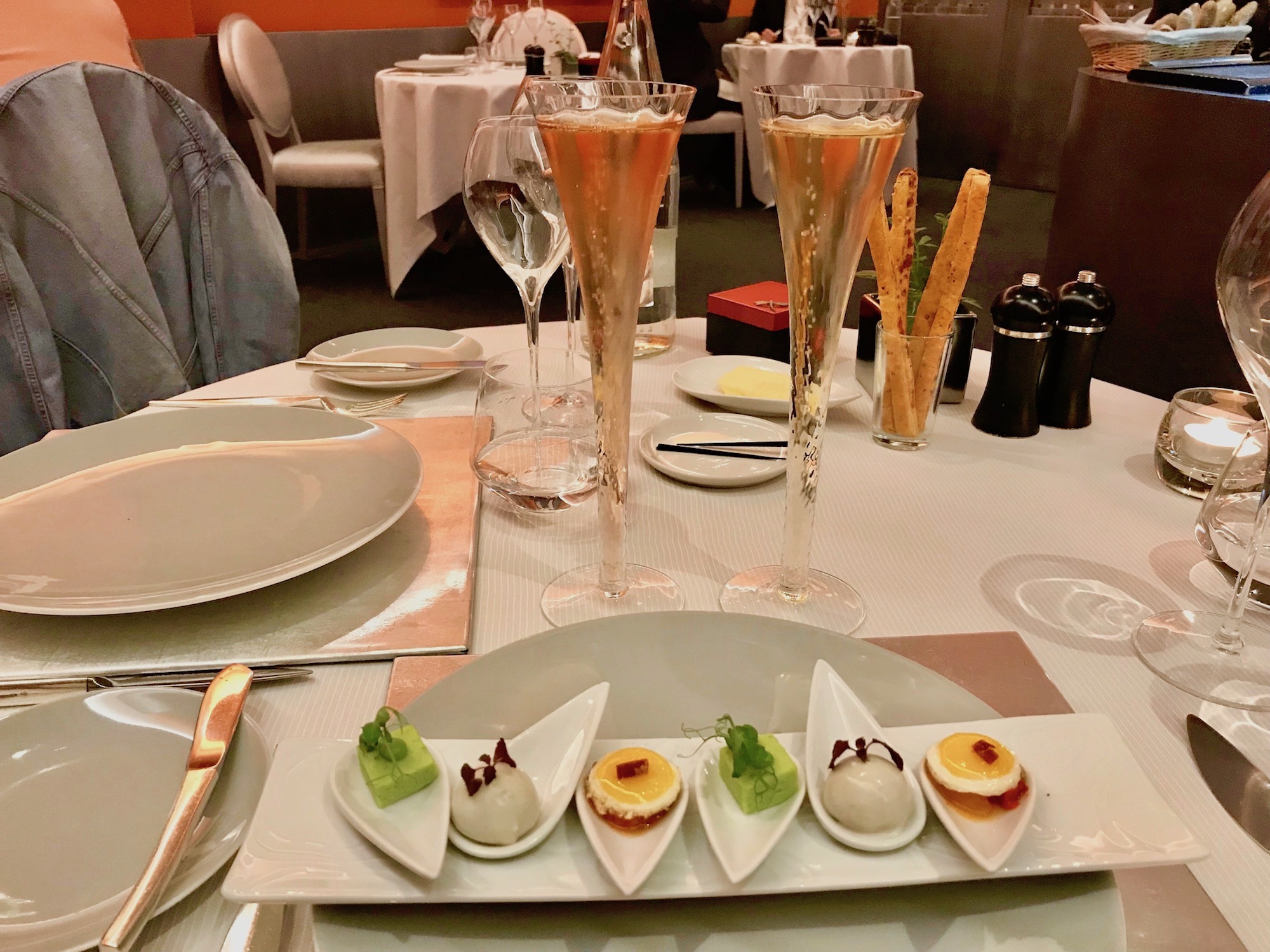
• Bar emince a cru, fraicheurs du jardin—raw sea bass atop finely minced fresh vegetables from the garden, providing a striking contrast between the flavors of the fish and freshness of raw vegetables, whose delicate essence toned down the strong flavor of the raw fish.
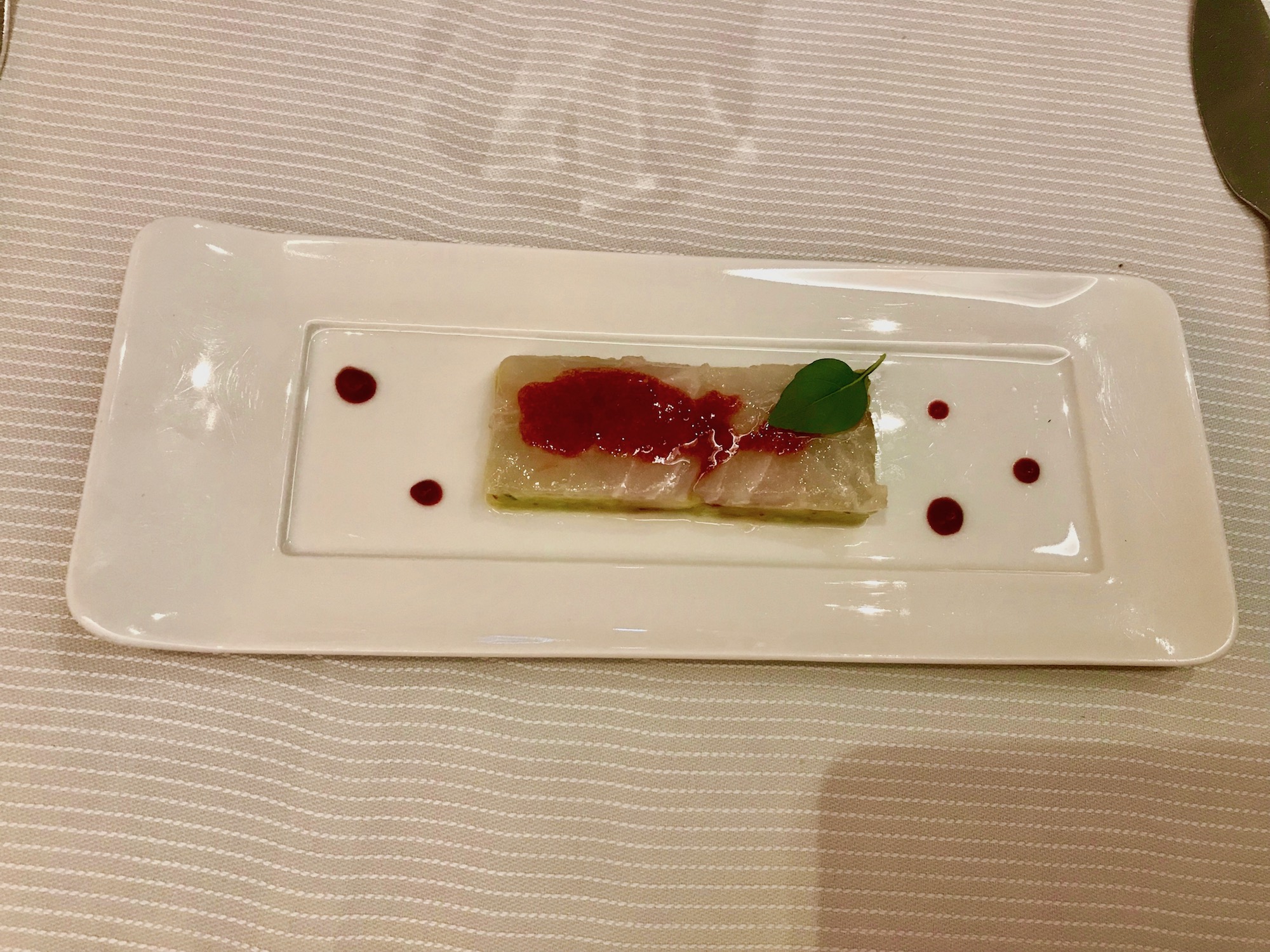
• Speciales d’Arcachon, caviar Ebene, la feuille au gout d’huitre — a special catch from Arcachon in southwest France, with a top level of caviar, the composition looking like a small tower, a mélange of tastes from the sea.
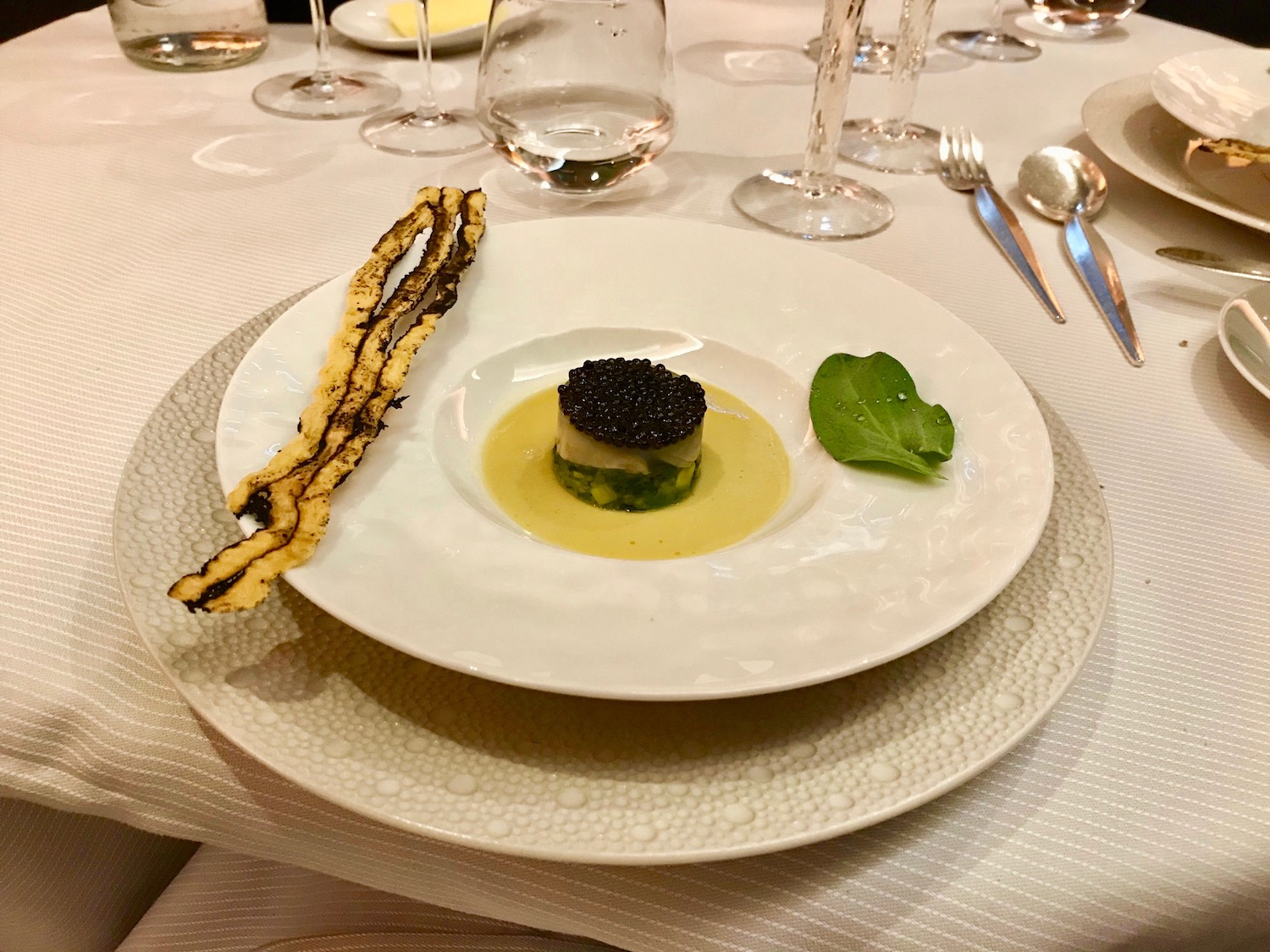
• Rouget barbet, rouille safranee et poutargue rapee; a perfectly grilled red mullet with grated, salted cured fish roe atop a thick saffron flavored roux, which blended extremely well with the strong flavor of the fish.
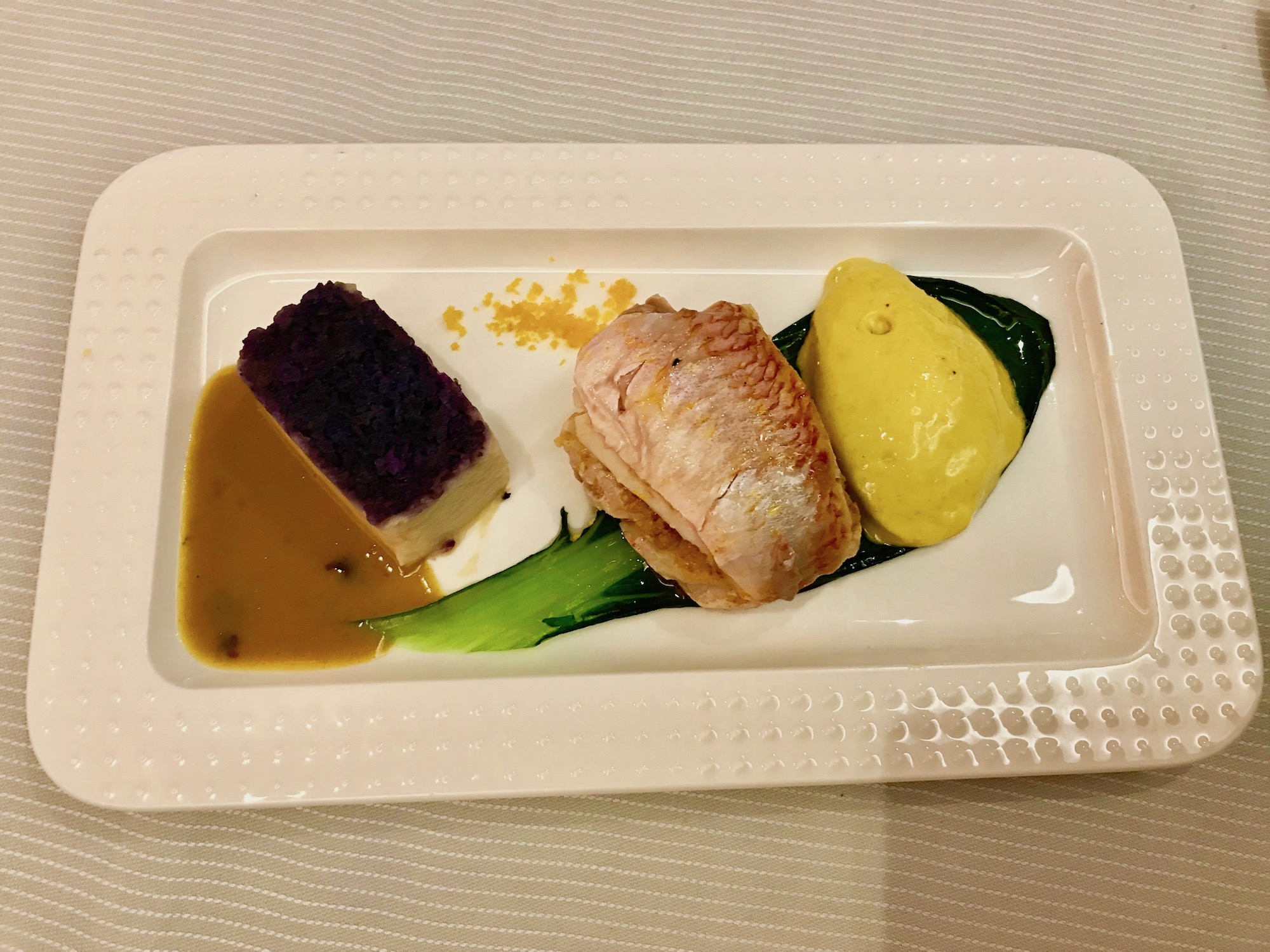
• Une histoire autour du cepe; poetically described as a story about mushrooms. Fun and fresh, a fantasie of funghi with several varieties artfully presented on the plate.
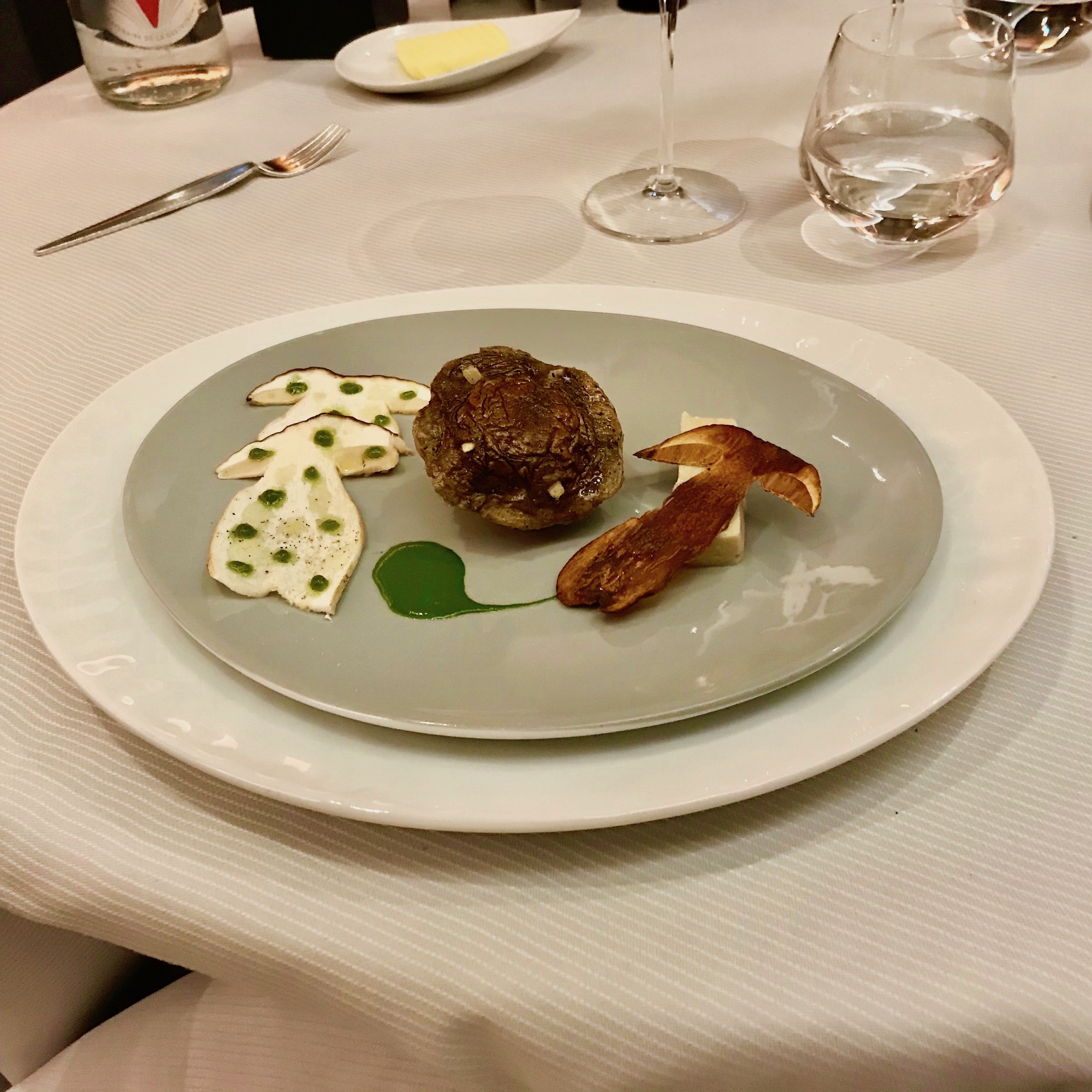
• Caneton croise, orange, olive et navet; duck breast with an orange jus that matched beautifully with the fowl, with an olive and radish providing a contrast in flavors.
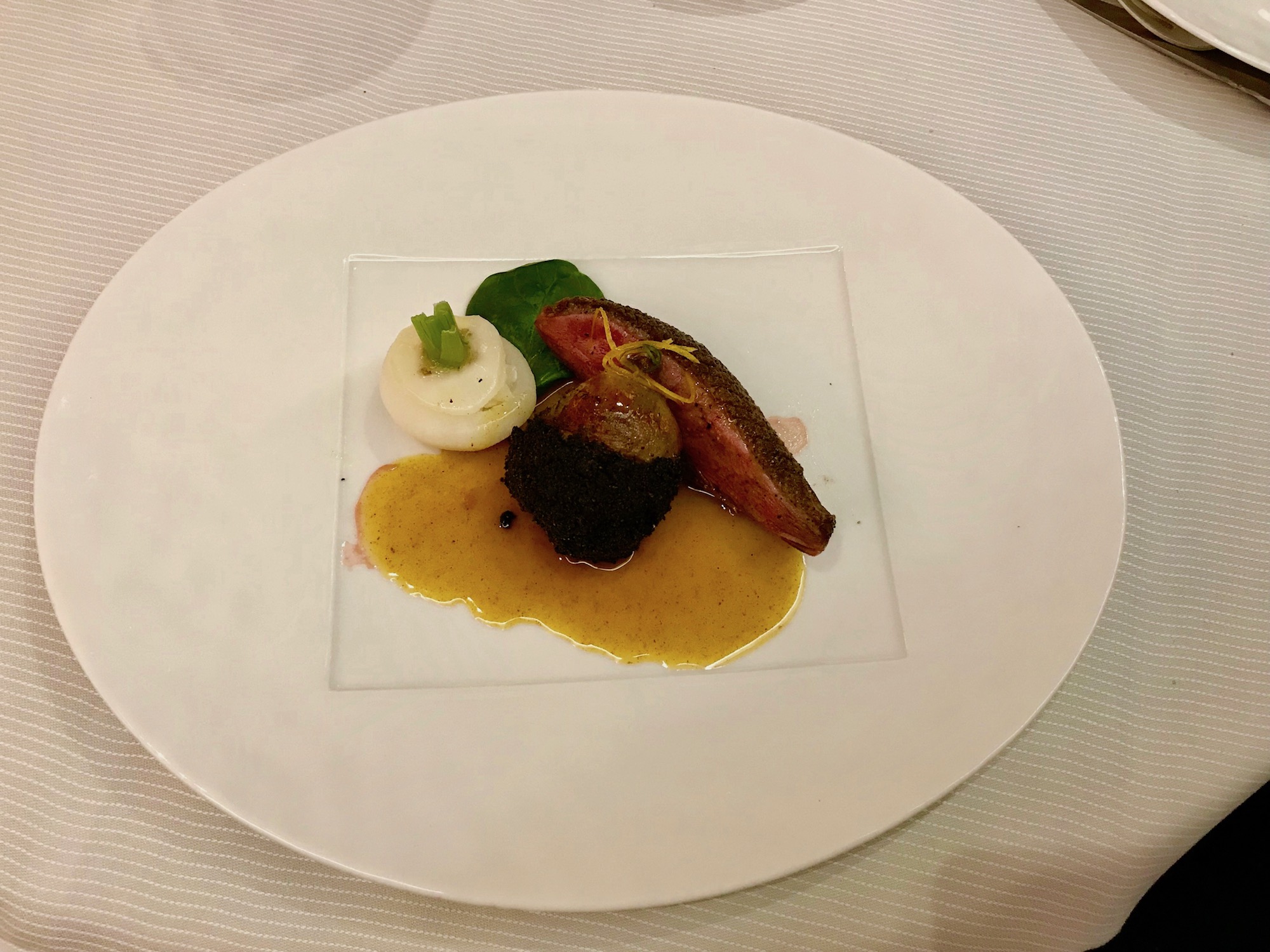
• Brillat Savarin en Fougeru mature a la truffe, white crusted cow’s milk cheese, with a triple cream Brie.
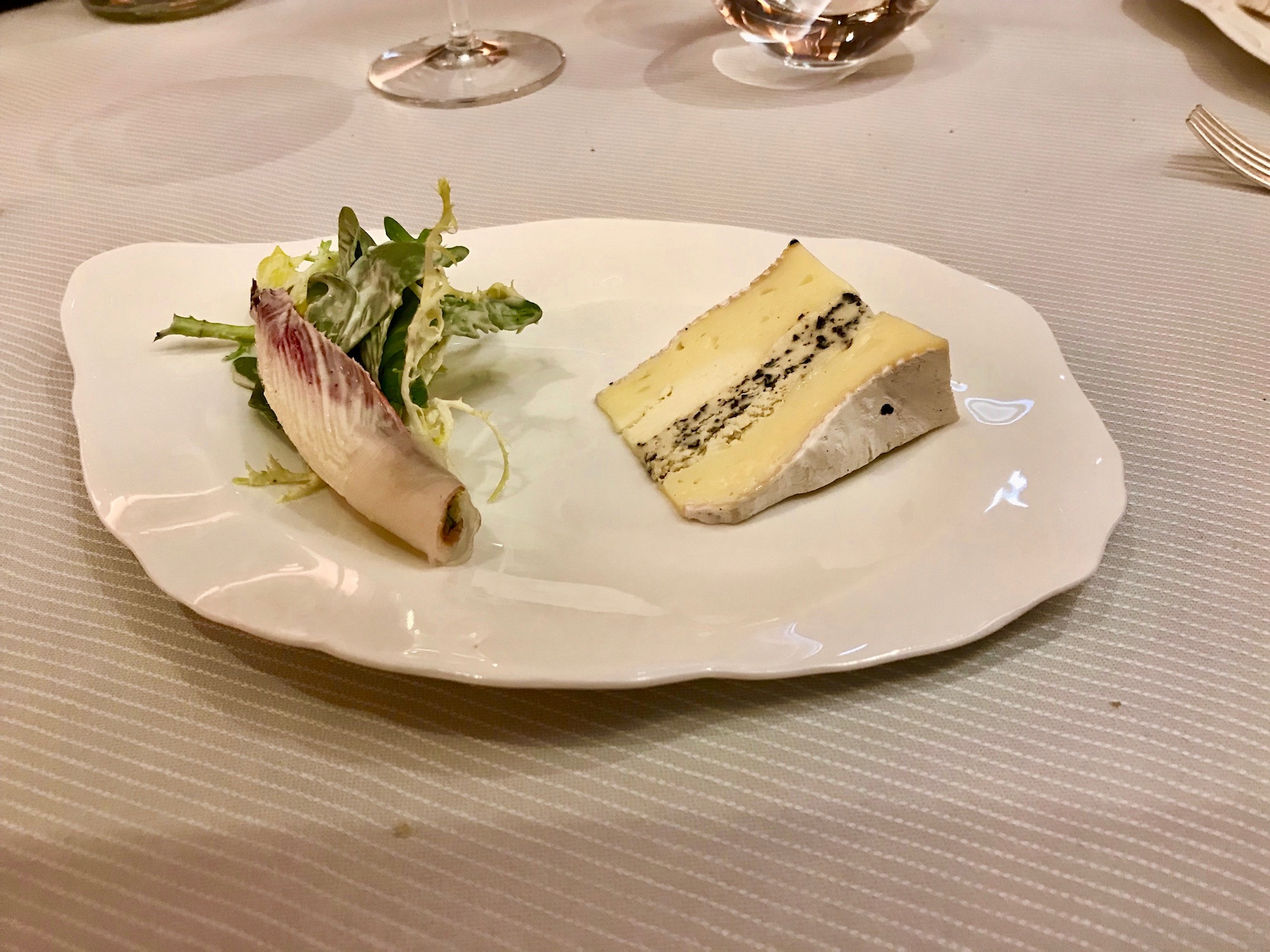
• Boule surprise punch au the vert, a chocolate ball “surprise” swimming in a rum punch and green tea.
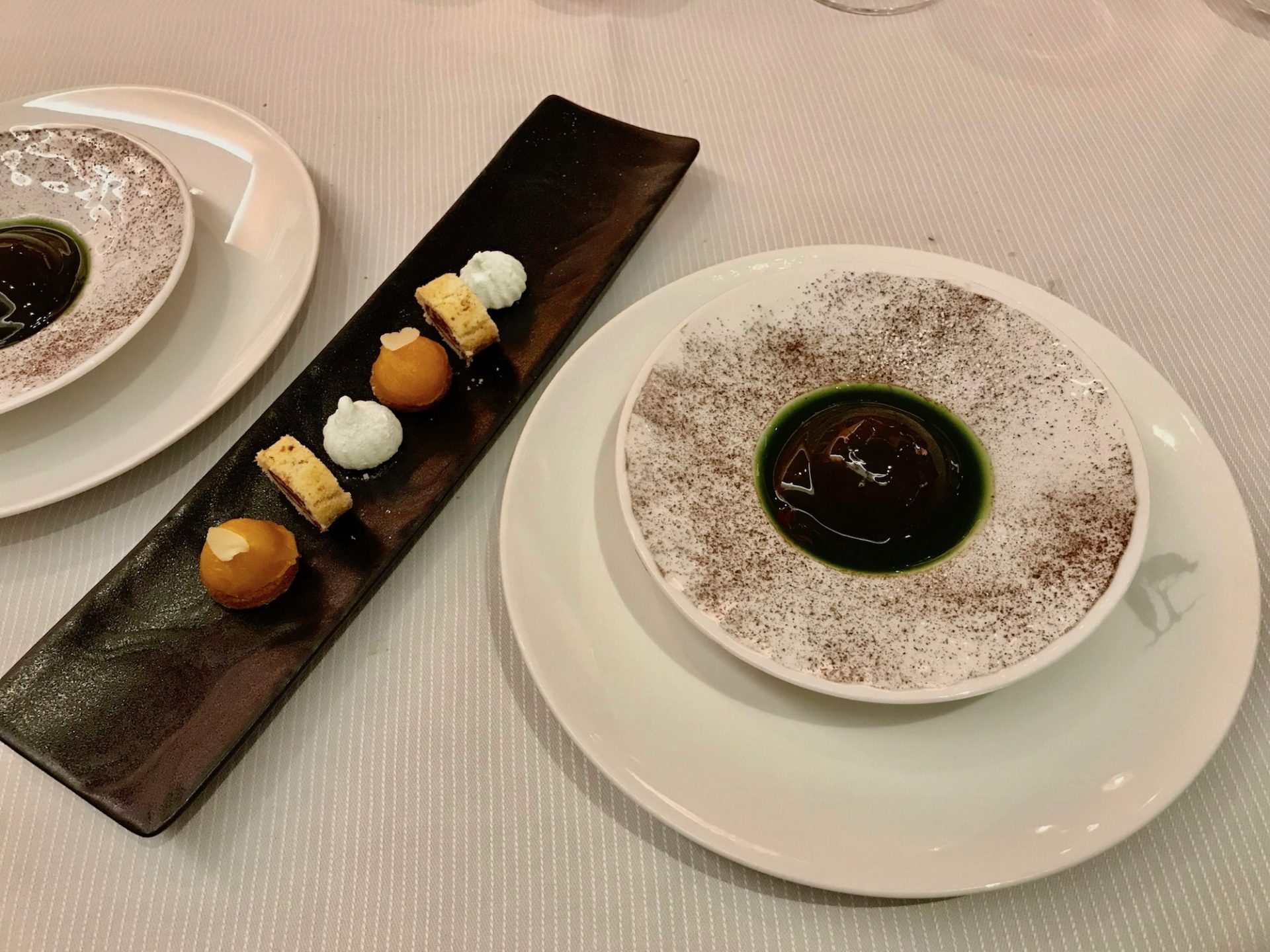
•Fraises des bois en Pavlova, sorbet a la rose, gelee de litchis, strawberries from the forest, with an artful marshmallow like creation atop, rose flavored sorbet and a lychee jelly.
.
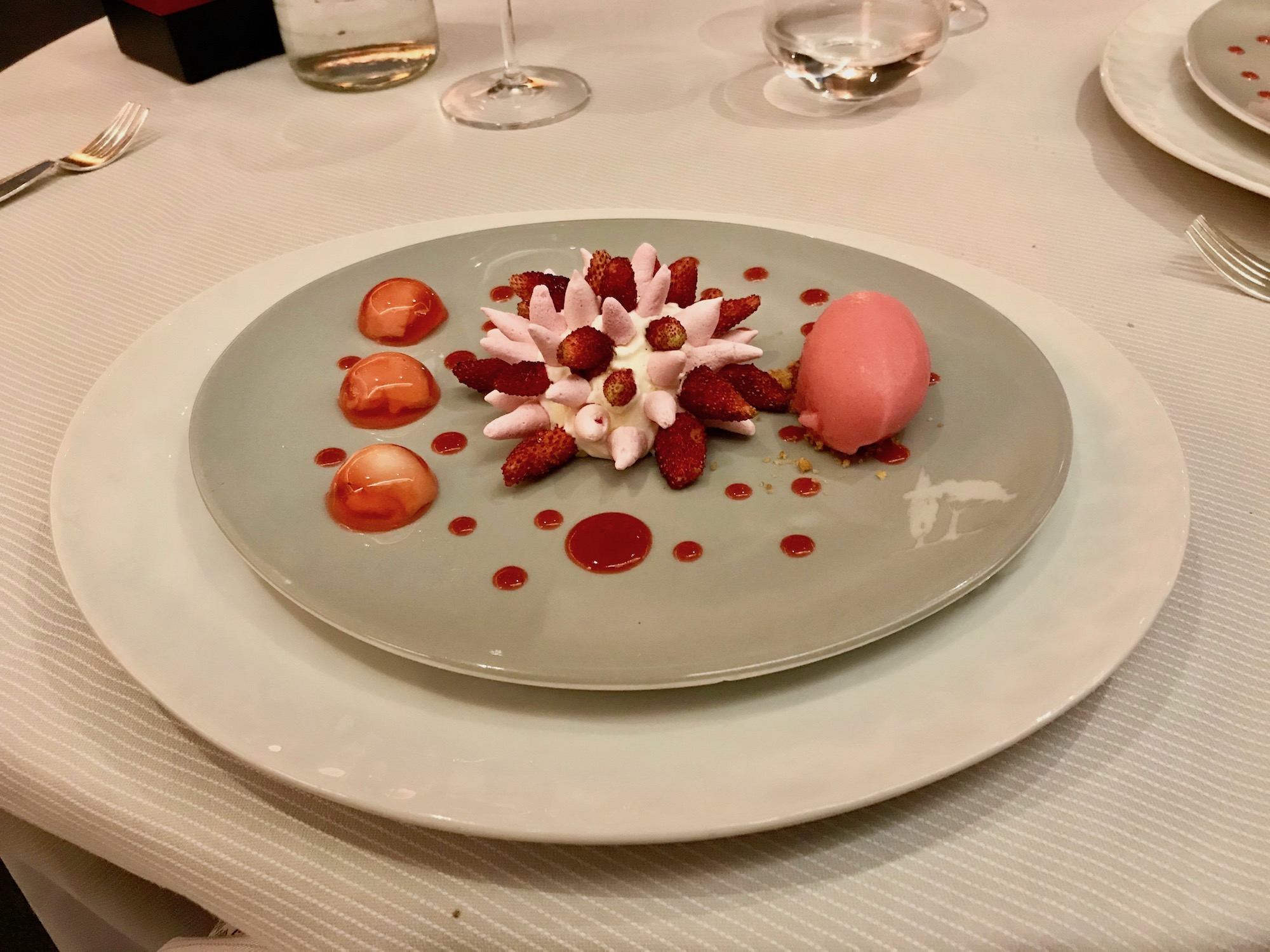
A truly memorable meal, and we savored its memories as we strolled arm in arm back through the Place Vendome on the way back to our hotel. Perhaps we will wait for another night for one of the evening Seine cruises on the Bateau Mouche fleet. Enough now to savor the lights of the Eiffel Tower and dream of new Parisian adventures on the morrow.
